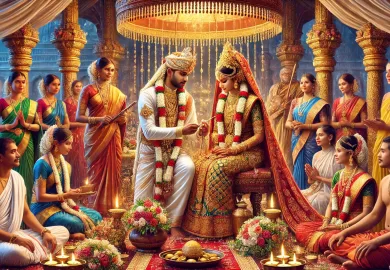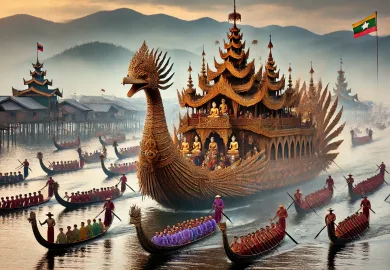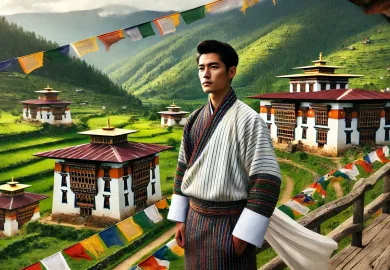
The Sama-Bajau people, often referred to as the “Sea Gypsies” or “Sea Nomads,” are a fascinating ethnic group with a unique culture deeply intertwined with the ocean. Inhabiting the coastal regions of the Philippines, Malaysia, and Indonesia, the Sama-Bajau have lived for centuries on the water, sustaining themselves through fishing and seafaring. Their way of life is a testimony to human adaptability and resilience, shaped by the rhythms of the sea and the demands of a maritime existence.
The Origins of the Sama-Bajau People
The origins of the Sama-Bajau people are shrouded in mystery, with various theories suggesting their migration from different regions of Southeast Asia. According to some anthropologists, the Sama-Bajau likely originated from the Mindanao region of the Philippines, gradually dispersing across the Sulu Archipelago, Borneo, and even as far as Sulawesi in Indonesia. This migration was driven by their seafaring skills and the search for new fishing grounds.
The Sama-Bajau are traditionally nomadic, living on houseboats called “lepa-lepa.” These boats are not only their homes but also their means of transportation, allowing them to follow the seasonal movements of fish and other marine resources. Over time, some Sama-Bajau communities have settled on land, constructing stilt houses over the water. Despite these changes, their deep connection to the sea remains central to their identity.
The Sama-Bajau’s nomadic lifestyle has also influenced their social structures and community dynamics. They tend to form small, tight-knit groups, often consisting of extended families. This close-knit social fabric is crucial for survival in the challenging maritime environment, where cooperation and mutual support are essential.
The Unique Maritime Culture of the Sama-Bajau
The Sama-Bajau culture is one of the most unique and vibrant in the world, deeply rooted in their maritime heritage. Their entire way of life revolves around the ocean, from their livelihoods to their spiritual beliefs. Fishing, particularly for fish and sea cucumbers, is the primary source of sustenance and income for the Sama-Bajau. They are skilled divers, often free-diving to incredible depths without the aid of modern equipment, relying solely on their knowledge and physical endurance.
The Sama-Bajau are also known for their exceptional boat-building skills. The “lepa-lepa” boats, used for both transportation and living, are crafted with precision and artistry. Each boat is adorned with intricate carvings and paintings that hold cultural and spiritual significance. These boats are not just functional but are also a symbol of the Sama-Bajau’s deep connection to the sea.
Cultural practices among the Sama-Bajau are heavily influenced by their environment. For example, they celebrate the “Regatta Lepa,” a colorful annual festival in Sabah, Malaysia, which showcases their seafaring culture. During this event, beautifully decorated boats parade across the water, and traditional music and dances are performed, highlighting the community’s pride in their heritage.
Spiritual Beliefs and Practices
The spiritual beliefs of the Sama-Bajau are closely tied to the natural world, particularly the ocean. They practice a form of animism, where they believe that spirits inhabit the sea, the sky, and the land. These spirits, known as “diwata” or “umagad,” are thought to influence the success of their fishing expeditions, the weather, and even the health of their communities. To appease these spirits, the Sama-Bajau perform rituals and offer prayers before embarking on fishing trips or during times of crisis.
One of the most significant spiritual practices among the Sama-Bajau is the “pag-umboh,” a ritual performed to honor the spirits of their ancestors. This ceremony is usually conducted by a community elder or a “pandita,” a spiritual leader, who communicates with the spirits to seek their guidance and protection. The pag-umboh is a solemn event, often accompanied by chanting, dancing, and the offering of food to the spirits.
In addition to their animistic beliefs, the Sama-Bajau have also been influenced by Islam, particularly in regions where they have settled on land. While some Sama-Bajau communities have adopted Islamic practices, they often blend these with their traditional beliefs, creating a unique syncretic religion. For example, the Sama-Bajau in certain areas may celebrate Islamic holidays like Eid al-Fitr, while also performing traditional rituals that honor the spirits of the sea.
The Challenges Facing the Sama-Bajau Today
Despite their rich cultural heritage, the Sama-Bajau people face numerous challenges in the modern world. One of the most pressing issues is the loss of their traditional way of life due to environmental degradation and changing economic conditions. Overfishing, pollution, and climate change have severely impacted the marine ecosystems that the Sama-Bajau depend on, leading to a decline in fish stocks and other marine resources.
The encroachment of modern development has also disrupted the Sama-Bajau’s traditional lifestyle. In many areas, they have been displaced from their ancestral waters, forcing them to abandon their houseboats and settle on land. This transition has been difficult for many Sama-Bajau, who struggle to adapt to a sedentary lifestyle and face challenges in accessing education, healthcare, and economic opportunities.
Another significant challenge is the issue of statelessness. Many Sama-Bajau are not recognized as citizens by the countries they inhabit, particularly in Malaysia and the Philippines. This lack of legal status leaves them vulnerable to exploitation and limits their access to essential services. Statelessness also prevents the Sama-Bajau from fully participating in the political and social life of the countries they live in, further marginalizing them.
Efforts to Preserve Sama-Bajau Culture
Despite these challenges, there are ongoing efforts to preserve the culture and traditions of the Sama-Bajau people. Various non-governmental organizations (NGOs) and cultural preservation groups are working to document and promote the Sama-Bajau’s unique heritage. These initiatives include recording their oral histories, documenting traditional knowledge, and supporting cultural festivals that celebrate Sama-Bajau customs.
One such initiative is the establishment of marine protected areas (MPAs) in regions where the Sama-Bajau live. These MPAs are designed to conserve marine biodiversity while also ensuring that the Sama-Bajau can continue their traditional fishing practices sustainably. By protecting the ecosystems that the Sama-Bajau depend on, these efforts aim to safeguard their way of life for future generations.
Education and advocacy are also crucial components of cultural preservation efforts. By raising awareness about the Sama-Bajau’s plight and promoting their cultural contributions, these initiatives seek to foster greater understanding and respect for the Sama-Bajau within broader society. Additionally, there are programs aimed at providing the Sama-Bajau with access to education and vocational training, helping them to adapt to the changing world while maintaining their cultural identity.
Conclusion
The Sama-Bajau people are a testament to the resilience and adaptability of human cultures in the face of adversity. Their deep connection to the sea, unique maritime traditions, and rich spiritual beliefs make them one of the most fascinating ethnic groups in Southeast Asia. However, the challenges they face in the modern world threaten to erode their traditional way of life. It is crucial that efforts to preserve and promote the Sama-Bajau’s cultural heritage continue, ensuring that future generations can appreciate and learn from their unique way of life.
By understanding and supporting the Sama-Bajau people, we not only help to preserve a valuable cultural heritage but also contribute to the broader goal of protecting the world’s diverse cultures and the environments they inhabit. The story of the Sama-Bajau is a reminder of the deep interconnection between humanity and the natural world, and the importance of preserving both for the future.








